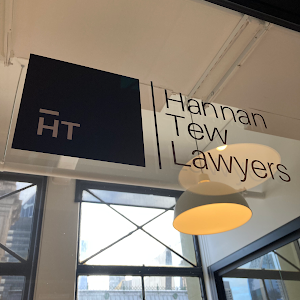The Employer Nomination Scheme (ENS) (Subclass 186) visa is an employer sponsored visa for skilled foreign workers employed in specified occupations. The visa enables suitable employees to live and work in Australia permanently where a suitable Australian worker cannot be sourced. Eligibility for the 186 visa is dependent on several factors, including the occupation, age, and salary of the candidate.
What are the stages of a 186 visa application?
There are two stages of a 186 visa application. This includes the:
- Nomination, where the sponsoring employer nominates a position within the organisation; and
- Visa, where the visa applicant demonstrates they meet the eligibility requirements.
What are the eligibility requirements of the 186 visa?
The 186 visa has three streams, being the:
- Temporary Residence Transition (TRT) stream;
- Direct Entry (DE) stream; and
- Labour Agreement stream.
Each stream has its own specific eligibility requirements. However, generally speaking, eligibility for a 186 visa requires an approved nomination, for the applicant to have the qualifications and work experience required for the role, and that the applicant meet the English, health, and character requirements.
You can read more about eligibility requirements for the different streams of the 186 visa here.
What documents are required for a 186 nomination application?
The sponsoring employer will need to provide the documents required for a 186 nomination. Documents that should be provided are outlined in the table below:
Evidence required |
Document type |
| Genuine position |
|
| Financial capacity to fill role |
|
| Market rates |
|
Although not an essential legislative requirement, undertaking labour market testing (LMT) is also highly recommended in order to demonstrate that a position is genuine.
What documents are required for a 186 visa?
The specific documents required for a 186 visa application will depend on the unique circumstances of the nominee and their family members. A general guide to the documents required for a 186 visa is outlined in the table below:
Document required |
Primary applicant |
Secondary applicants |
| Passport and other identity documents (e.g., national identity card, change of name documents) | ✔ | ✔ |
| Passport sized photograph | ✔ | ✔ |
| Evidence of relationship to primary applicant (e.g., marriage certificate or birth certificate) | ✖ | ✔ |
| CV (covering at least the last five years) | ✔ | ✖ |
| Degree certificates and transcripts (with accompanying translations) | ✔ | ✖ |
| Licences and registrations |
✔ (for certain occupations) |
✖ |
| Reference letters from previous employers | ✔
(if qualifications are insufficient) |
✖ |
| Positive skills assessment |
✔ (for direct entry stream) |
✖ |
| PAYG statements / payslips |
✔ (for direct entry stream) |
✖ |
| Police clearances from every country you have spent 12 months or more in the past 10 years (since turning 16 years of age) | ✔ | ✔ |
| Evidence of English language proficiency | ✔ |
✔ (for applicants aged 18 years and older) |
The above is a general checklist, meaning further information may be required. Notably, additional documents will be required you are seeking to rely on an age or English exemption.
Who can be included in a 186 visa application?
Immediate family can be included in a 186 visa as secondary applicants. This includes a spouse or de facto partner, dependents under 18 years of age, and dependents over 18 years of age in certain circumstances.
To include dependents over 18 years of age who are not a spouse or de facto partner, it will need to be evidenced that they are dependent on the primary applicant or the primary applicant’s partner. Dependency refers to a substantial reliance to have basic needs met. For dependants under 23 years of age, this includes evidence that:
- they live with the primary applicant (demonstrated by bills or a lease agreement);
- they are a full-time student (demonstrated by course enrolment); and
- they require financial support (demonstrated by bank statements).
Only in limited circumstances can a dependant over 23 years of age be included in a 186 visa (e.g., they have a recognised disability).
I have lodged my 186 visa – what happens now?
Unless you have an existing visa with authorisation to work, you cannot commence work with your employer until your visa is approved. However, many 186 visa applicants will already hold an employer sponsored temporary visa which will permit them to continue working.
If you are in Australia and have lodged a 186 visa application, you will be granted a Bridging Visa A (BVA), which will allow you to remain in Australia until a decision on your application is made. It is important to note that you will not be allowed to re-enter Australia if you depart on a BVA. If you wish to travel while the holder of a BVA, you will need to apply for a different bridging visa.
You can learn more about bridging visas and what they mean for your immigration status here.
Do you require further assistance?
If you require assistance with your 186 visa application, or have any other immigration related queries, our experienced team can help. Contact us by email at [email protected] or by phone at +61 3 9016 0484.



hello hannan
I have three year full time Experience as mechanic with dealership and my question is that I am not getting each 6 band in all module of IELTS. I have 6 in speaking and listening ,other side reading and writing I have 5.5. So I want to know about that score can acceptable or not. Please let me know.
Hi Gagan,
For an ENS visa as a primary applicant, you’ll generally need IELTS of 6.0 across all bands unless exempt. You can refer to this article for further information.
Feel free to contact us at [email protected] to discuss further.
Kind regards,
Hannan Tew
Thank you Emily. The information is very precise and understandable. Can I do the LMT after I apply for 186 direct entry visas? I do not have time to wait for 28 days to complete LMT. My current visa is expiring in 10 days. Thank you very much.
Hi Anne,
Glad you found the article helpful.
LMT is not an essential legislative requirement but highly recommended in order to demonstrate that a position is genuine. If you don’t have the time to complete LMT, then you can consider an application without LMT once you’ve weighed up the risks.
Feel free to contact us at [email protected] to discuss further.
Kind regards,
Hannan Tew
Thank you for the information.
What proof do I need to provide to show that me and me de facto partner are in a relationship? Thanks, Emma
Hi Emma,
Whilst the specific documents will depend on your situation, you can generally refer to the documents for a Partner visa: https://www.hannantew.com.au/blogs/family/partner/partner-visa-document-checklist/
Feel free to contact us at [email protected] if you’d like further information.
Kind regards,
Hannan Tew
I’m on a protection visa (SC 866 bridging). I’ve got almost 3 years full time working experience (with proper salary) as an Accountant, 65 each in PTE.
Is there any chance applying for 186 visa?
Hi Tajul,
You may be able to apply for a 186 DE visa even whilst holding a BVA, BVB or BVC, though you will require a skills assessment.
Feel free to contact us at [email protected] if you’d like to discuss this further.
Kind regards,
Hannan Tew
Under the “Financial capacity to fill role” should the employer submit all documents ? If not, what are the specific documents?
Hi Zoe,
The relevant documents will depend on the specific circumstances.
This checklist is set up to be a guide, but feel free to contact us at [email protected] if you want more detailed assistance.
Kind regards,
Hannan Tew
Hi Hanna
I’m a dependant under 482 visa and valid until May 2025. After lodged 186 visa, Can I travel overseas with my current 482 still valid or I need to apply Bridging B.
Thank you
Hi Hana,
If your 482 visa is still valid you can travel during validity.
If however, your 482 expires and you move onto a BVA, you will require a BVB to travel and return to Australia during 186 processing.
Feel free to contact us at [email protected] if you have further questions.
Kind regards,
Hannan Tew